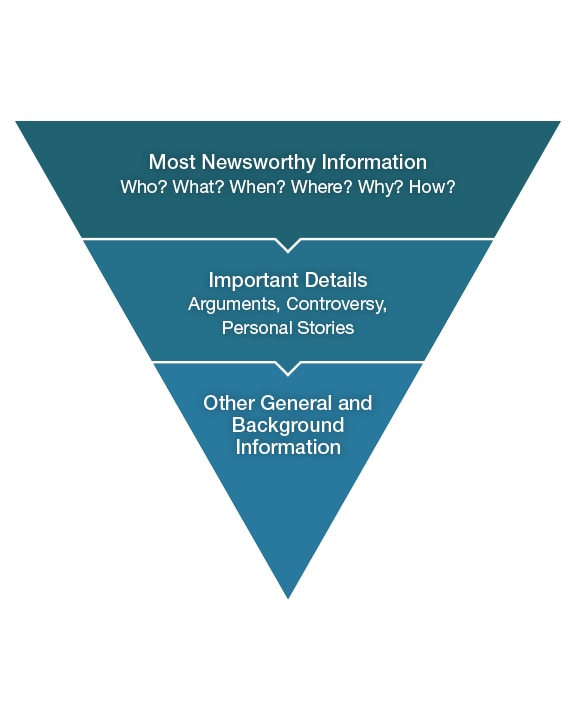The truth is, users don’t read Web pages; they scan them, looking for things they can read very quickly until they find a relevant piece of information.
What does this mean? Write pages the way people use them. Make them scannable.
Organize Content in an Inverted Pyramid
Organize your content as an inverted pyramid; put the most important information at the top and less important information at the bottom.
Add Headings
Look for opportunities to divide your content into sections and give each section a descriptive heading.
Write Concisely
Keep your paragraphs short—no more than 3-4 lines of text. Look for opportunities to cut words, sentences, and even entire paragraphs if they do not contribute necessary content.
Write actively, not passively
Always write using active voice. For example, say “we mailed your form” not “your form was mailed.”
Use Bulleted and Numbered Lists
Use bulleted or numbered lists when appropriate.
Link and Bold Important Pieces of Information
Use hyperlinks and bolding to highlight important pieces of content, but be judicious—less is more.
Link Meaningful Words
When you do hyperlink content, make sure you link phrases that convey information about the destination Web page or file. Do not use “click here”—it conveys no information and is problematic for individuals using screen readers and other assistive technologies.
Avoid acronyms and jargon
Don’t use acronyms and jargon. If you must use acronyms, spell out the words the first time you them on every Web page.

